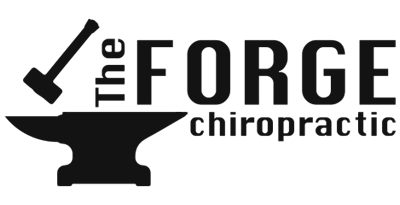Understanding Common Lower Extremity Conditions: Relief for Hip, Knee, Ankle, and Foot Pain in Baldwin WI

Your lower extremities – your hips, knees, ankles, and feet – are the foundation of your movement, supporting your body through countless daily activities. When pain or dysfunction arises in these areas, it can significantly impact your quality of life. At our chiropractic clinic in Baldwin WI we are dedicated to helping you understand the cause of your lower extremity discomfort and nd effective solutions.
This page provides a concise overview of several common conditions affecting the lower limbs. An accurate diagnosis by a healthcare professional is always the crucial first step toward appropriate and effective care.
Femoroacetabular Impingement (FAI) (Hip)
Femoroacetabular Impingement, or FAI, occurs when the bones of the hip joint (the ball and socket) have a shape that doesn't fit together perfectly, leading to abnormal friction and potential damage to the joint's cartilage or the labrum (a cartilage ring) during movement.
- What it is: A condition where the hip bones' shape causes pinching and wear within the joint. It's a common cause of hip pain in active adults under 50.
- Common Causes: Oen related to how the hip developed, but repetitive motions in sports or work can trigger symptoms like hip/groin pain, clicking, or stiffness.
Greater Trochanteric Pain Syndrome (GTPS) & Gluteal Tendinopathy (Lateral Hip Pain)
GTPS describes pain on the outer side of the hip. While oen called "bursitis," the primary cause is usually Gluteal Tendinopathy – a problem with the tendons of your gluteus medius or minimus muscles where they aach to the hip bone.
- What it is: Lateral hip pain, mainly due to irritation or degeneration of the gluteal tendons. Bursitis, if present, is typically secondary.
- Causes: Repetitive stress, compression of the tendons (often from tight overlying structures like the IT band), or weakness in the gluteal muscles (hip abductors) leading to poor pelvic stability and altered hip mechanics.
- Symptoms & Risk Factors: Pain on the outside of the hip, worse when lying on that side or with activity. More common in middle-aged to older adults, especially women. Obesity and co-existing low back pain or lower extremity arthritis are also factors.
Hamstring Strains (Posterior Thigh)
The hamstrings are three muscles at the back of your thigh that help extend your hip and bend your knee.
- What it is: A tear in one or more hamstring muscles, often where the muscle meets the tendon. Graded from mild (Grade 1) to a complete rupture (Grade 3).
- Causes: Usually from sudden, forceful movements like sprinting or jumping (eccentric contraction where the muscle lengthens under load) or from extreme stretching (common in activities like dancing or martial arts).
- Risk Factors: Muscular fatigue, inadequate warm-up, prior hamstring injury, inflexibility or weakness, a strength imbalance between hamstrings and quadriceps, and poor running mechanics.
Knee Osteoarthritis (OA)
Knee Osteoarthritis (OA) involves the gradual breakdown of protective cartilage in the knee joint, leading to pain and stiffness.
- What it is: Degenerative joint disease of the knee. The inner (medial) part of the knee is most commonly affected.
- Causes/Risk Factors: Primarily related to aging and accumulated stress on the joint. Key risk factors include excess weight, genetics, previous knee injuries or surgery, and occupations or activities involving repetitive squaing or kneeling. Altered hip or foot mechanics (like at the feet) can also contribute.
Meniscal Injuries (Knee)
The menisci are two C-shaped pieces of tough cartilage in your knee that act as shock absorbers and stabilizers.
- What it is: A tear in one of these cartilaginous discs.
- Causes: Traumatic tears often occur in younger individuals from forceful twisting injuries. Degenerative tears are more common with age as the menisci become less resilient and can tear with simple movements. The medial (inner) meniscus is more frequently injured.
- Symptoms: Knee pain, clicking, locking, catching, or a feeling of instability. Healing can be challenging, especially for tears in the inner, less vascular part of the meniscus.
Patellofemoral Pain Syndrome (PFPS) (Runner's Knee) & Chondromalacia Patellae (CMP)
These related conditions cause pain around or behind the kneecap (patella).
- What it is: PFPS is a general term for anterior knee pain due to imbalanced forces on the kneecap. CMP specically refers to the soening and breakdown of the cartilage on the underside of the kneecap, oen considered part of the PFPS spectrum.
- Causes: Usually related to how the kneecap tracks in the groove of the thigh bone. Common contributors include muscle imbalances (e.g., weak hip abductors/glutes, tight IT band), poor foot mechanics (like at the feet leading to inward rotation of the lower leg), overuse, or direct trauma.
- Symptoms: Aching pain around or under the kneecap, oen worse with running, stairs, squaing, or prolonged siing. May also involve grinding or crepitus.
Medial Tibial Stress Syndrome (MTSS) / Shin Splints
MTSS, or "shin splints," is exercise-induced pain along the inner edge of the shinbone (tibia).
- What it is: An overuse injury common in runners and athletes, involving inflammation of the bone's outer lining (periosteum) or a stress reaction in the tibia itself.
- Causes: Repetitive impact and traction forces from muscles (like the deep calf muscles) pulling on their tibial aachment. Training errors ("too much, too soon, too fast"), running on hard surfaces, and poor foot biomechanics (like hyperpronation or at feet) are major contributors.
- Symptoms: Tenderness and aching pain along the inner shin, usually brought on by activity.
Lateral Ankle Sprain (Inversion Sprain)
This is the most common type of ankle sprain, occurring when the foot twists inward, stretching or tearing the ligaments on the outer side of the ankle.
- What it is: Injury to one or more of the lateral ankle ligaments, most commonly the anterior talofibular ligament (ATFL).
- Causes: Typically, a sudden inward rolling or twisting of the ankle, common in sports involving jumping, cutting, or uneven surfaces.
- Symptoms: Outer ankle pain, swelling, bruising, and instability. Severity is graded (I-III) based on ligament damage.
- Risk Factors: Previous ankle sprains, limited ankle dorsiexion (ability to pull foot up), poor balance, and inadequate conditioning.
Plantar Fasciitis
Plantar fasciitis is the leading cause of pain on the bottom of the heel.
- What it is: Irritation and degeneration of the plantar fascia, a thick band of tissue that supports the arch of your foot, running from your heel to your toes.
- Causes: Repetitive strain and micro-tearing of the fascia, oen where it aaches to the heel bone. It's now considered more of a degenerative condition ("fasciosis") than purely inammatory ("itis").
- Risk Factors: Foot biomechanics (at feet or very high arches), tight calf muscles or hamstrings, obesity or sudden weight gain, prolonged standing or running (especially on hard surfaces), and unsupportive footwear.
- Symptoms: Sharp, stabbing pain in the boom of the heel, typically worst with the rst steps in the morning or aer periods of rest.
Approachs to Lower Extremity Conditions in Baldwin WI
At The Forge Chiropractic, we understand that lower extremity pain can be complex and oen involves more than just the site of discomfort. An accurate diagnosis is paramount to developing an eective treatment strategy.
- Comprehensive Evaluation:
- Detailed History: We begin by thoroughly discussing your symptoms – their onset, nature (sharp, dull, aching, burning, tingling, numbness), what activities aggravate or alleviate them, your daily routines, work demands, exercise habits, past injuries, footwear, and overall health.
- Physical Examination: This involves:
- Observation of your posture, gait (walking pattern), and how you move.
- Assessment of active and passive range of motion for affected joints (hip, knee, ankle, foot) and often related areas like the lumbar spine and pelvis.
- Specific orthopedic tests tailored to your suspected condition to assess ligaments, tendons, menisci, joint integrity, and nerve involvement.
- Neurological screening, including sensation, muscle strength, and reflexes, especially if nerve-related symptoms are present.
- Careful palpation to identify tender structures, muscle tightness or spasm, trigger points, and swelling.
- Functional movement assessments to see how your condition impacts your ability to perform daily tasks like squatting, lunging, or balancing.
- (If applicable, Jtech functional assessment tools may be utilized for objective measurements of strength, range of motion, or balance.)
- Whole-Person Healthcare Approach: We consider the interconnectedness of your body. Lower extremity problems are often influenced by biomechanics higher up (like in the pelvis and low back) or further down (like foot mechanics inuencing the knee and hip). We look at factors like gait paerns, footwear choices, ergonomics, activity levels, and overall lifestyle.
- Personalized Treatment Strategies: Your treatment plan will be individualized based on your specific diagnosis and contributing factors. It may include a combination of:
- Pain and Inflammation Management: Utilizing gentle therapies to reduce acute symptoms and promote a better healing environment.
- Restoring Joint Mechanics: Chiropractic adjustments and mobilizations to affected joints in the lower extremity, as well as to the pelvis and spine, if their dysfunction is contributing to your lower limb problem. The goal is to improve movement, reduce abnormal stress, and enhance overall function.
- Soft Tissue Therapies: We offer a range of soft tissue therapies to address muscle tightness and trigger points that can contribute to pain and restricted movement. These in-office therapies will include, but are not limited to, Instrument-Assisted Soft Tissue Mobilization (IASTM), Dry Needling, Dynamic Cupping, and Voodoo Flossing.
- Rehabilitative Exercises: A crucial component of care, including specific exercises to:
- Improve strength (e.g., for hip stabilizers, quadriceps, hamstrings, calf muscles, foot intrinsics).
- Enhance flexibility and mobility (stretching tight muscles like hamstrings, calves, and hip extensors).
- Improve balance and proprioception (your body’s sense of its position in space).
- Gait Training and Biomechanical Correction: If abnormal walking or running patterns are contributing, we may provide guidance on improving these.
- Education and Lifestyle Advice: This includes guidance on appropriate activity modification, footwear recommendations, ergonomic adjustments, self-care strategies for managing symptoms at home, and preventative measures to reduce the risk of recurrence.
- Co-management and Referral: We are committed to ensuring you receive the most appropriate care. If your condition requires medical management (e.g., medication, injections), advanced imaging (MRI, etc.), or a consultation with an orthopedic specialist, podiatrist, or other healthcare professional (e.g., for severe FAI, complex meniscal tears requiring surgery, advanced OA, or non-resolving plantar fasciitis), we will facilitate the necessary referral and work collaboratively.
Our primary objective at The Forge Chiropractic is to accurately diagnose the cause of your lower extremity pain, provide effective and evidence-informed care to alleviate your discomfort, restore optimal function, and empower you to return to the activities you enjoy. If you are experiencing pain or limitation in your hip, knee, ankle, or foot, we invite you to schedule a consultation at our Baldwin, Wisconsin oce.
OFFICE HOURS
Monday
12:00pm - 6:00pm
Tuesday
8:00am - 12:00pm
2:00pm - 6:00pm
Wednesday
8:00am - 12:00pm
2:00pm - 6:00pm
Thursday
8:00am - 12:00pm
2:00pm - 6:00pm
Friday
8:00am - 12:00pm
Saturday & Sunday
Closed
The Forge Chiropractic
900 Main St
Baldwin, WI 54002



